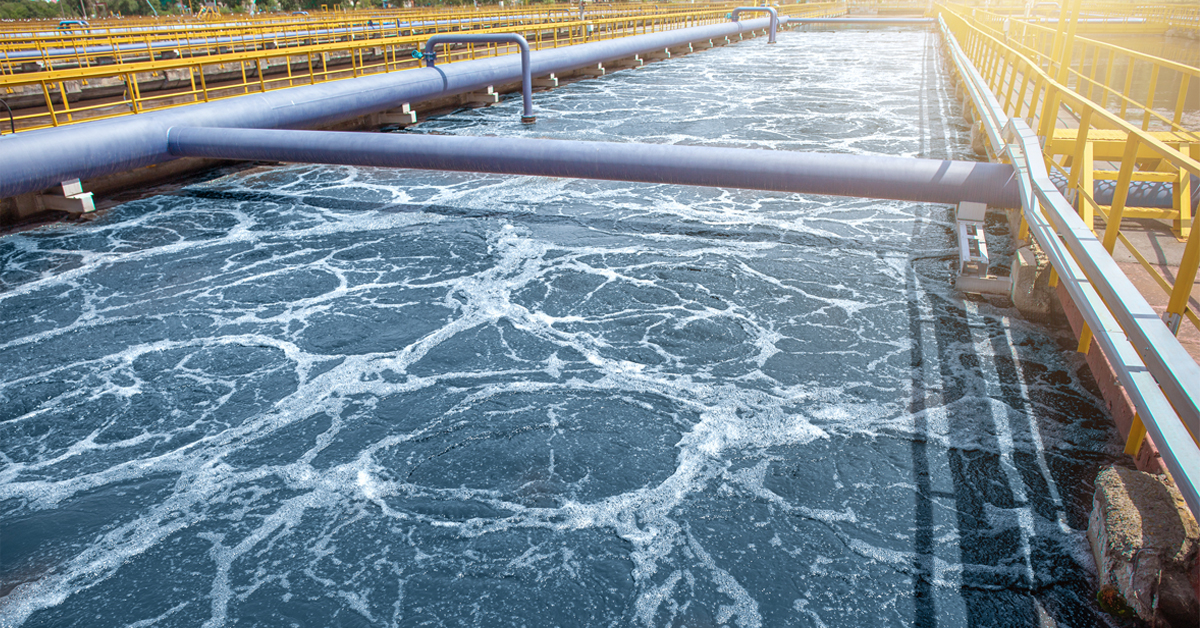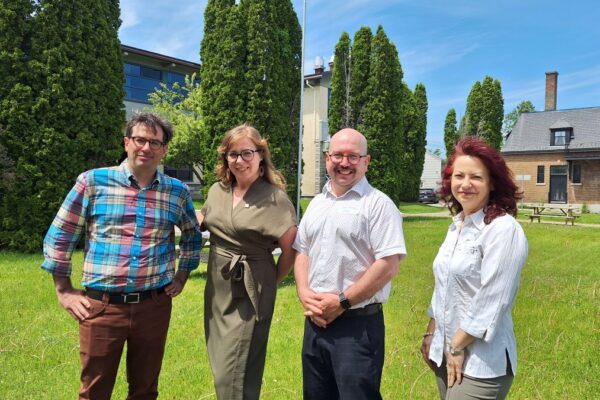- Research
Treating wastewater from domestic, institutional, and industrial sources requires efficient processes.

Emerging technologies have the advantage of being able to be added downstream of the current systems.
Currently, treatment systems let, on average, half of the emerging contaminants found in wastewater go through. However, scientists are developing new technologies to make infrastructure more efficient and remove the remaining contaminants that would otherwise be discharged into waterways. Jean-François Blais, water treatment and environmental decontamination expert at the Institut national de la recherche scientifique (INRS), collaborated with Canadian scientists to review current and emerging treatment technologies. Through this review, the team determined the removal efficiency of a particular type of contaminant that causes hormonal disruption: endocrine disruptors.
Efficient technologies
One of the most promising technologies is ozonation. Ozone, a powerful oxidizing gas, breaks down pollutants through a chemical reaction. This very technology was chosen for the Jean-R.-Marcotte wastewater treatment plant, where all of Montréal’s wastewater converges. Another promising method in water treatment is adsorption with activated carbon. In addition to being inexpensive, this material can effectively filter and absorb contaminants regardless of whether it is in powder or granular form.
In his review, Professor Blais also focused on electro-oxidation processes and membrane bioreactors. The first method uses two electrodes to degrade pollutants. The second combines a membrane (to filter out some of the contaminants) and biological organisms (to degrade what passes through it).
These two approaches are being developed at INRS, in Professor Patrick Drogui’s Laboratory of Environmental Electrotechnologies and Oxidative Processes.
“All of these emerging technologies have the advantage of being able to be added to existing treatment plants, mostly downstream of the current systems.”
Jean-François Blais
Ultimately, they could improve the performance of existing water treatment technologies without requiring major changes to municipal facilities.
The issue of Lac Saint-Charles
These different wastewater treatment options have real-world implications for municipalities. The City of Québec, in particular, quickly became interested in these innovative treatment methods following concerns about the water quality of its main water supply, Lac Saint-Charles. It therefore mandated the INRS team to find effective solutions to this problem, as well as to connect its sewer system.
“Many remote residences are using septic tanks and absorption fields,” says Blais. We wanted to identify alternatives, like stand-alone treatment systems for homes, to connect them without sacrificing the health of our bodies of water.”
In April 2021, Professor Blais, Professor Sophie Duchesne, Research Officer Geneviève Rioux, and Priscille Ahossi, master’s student in Professional Studies in Water Sciences, submitted an assessment and recommendation report outlining solutions the City could implement.
About the study
The article “A comprehensive review on current technologies for removal of endocrine disrupting chemicals from wastewaters,” by Dariush Azizi, Ayman Arif, David Blair, Justine Dionne, Yves Filion, Yassine Ouarda, Ana Gisell Pazmino, Rama Pulicharla, Victoria Rilstone, Bhagyashree Tiwari, Leah Vignale, Satinder Kaur Brar, Pascale Champagne, Patrick Drogui, Valérie Langlois, and Jean-François Blais, was published in Environmental Research’s 2022 special issue on endocrine disrupting chemicals, in collaboration with the Intersectoral Centre for Endocrine Disruptor Analysis (ICEDA).




